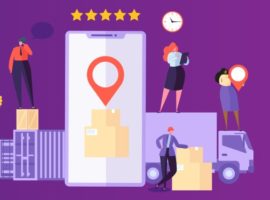The ethical supply chain: Definition, examples, stats
 Consumers expect more from the brands they buy from, and an ethical supply chain is now a requirement. Learn what it means and how to get started.
Consumers expect more from the brands they buy from, and an ethical supply chain is now a requirement. Learn what it means and how to get started.
The idea of the Circular Economy is so intuitive that it’s astonishing we haven’t adopted it more fully yet.
Our home planet has finite material resources and delicate environmental balances, so surely a commerce system that promotes recycling and re-use rather than landfill and waste incineration is a no-brainer.
Yet landfill and incineration remain our default setting, and the linear economy approach of ‘buy it, use it, throw it away’ is the only real option available for consumers. Household recycling exists in some places, but the model is broken: the majority of what we buy is simply not fit for re-use, and is destined to end up in a hole in the ground or as noxious smoke.
A circular economic model is designed to minimise, and even eliminate, waste altogether by only building products, services, and supply chains that are hard-coded with the logic of recycling. Simply put: if it can’t be re-used, it doesn’t get made.
This model is not an innovation – it’s been hiding in plain sight forever – it’s exactly how natural ecosystems work.
So, what is stopping the Circular Economy from becoming a reality?
Why are we failing to put this idea into action – especially when environmental concerns are becoming a burning priority?
Two big perceived barriers have blocked our way so far:
But no more. We have arrived at a point where the technology, the sense of purpose, and the concentration of influence are now configured to make this happen.
It’s going to be a long journey, but we are finally ready to begin.
 Consumers expect more from the brands they buy from, and an ethical supply chain is now a requirement. Learn what it means and how to get started.
Consumers expect more from the brands they buy from, and an ethical supply chain is now a requirement. Learn what it means and how to get started.
The first driving force of the Circular Economy will be transparent supply chains.
The second will be enlightened consumer choices.
The third will be change-enabling leadership by purpose-driven corporations and institutions.
A transparent supply chain means securely capturing, storing, and making visible all the embedded environmental impacts and costs of the goods and services in the supply chain.
It’s already happening to a limited extent – think of the FairTrade foundation, or the SAP/FRDM partnership against forced labour – but to reach a critical mass it needs to be scaled-up and widely embraced by retailers and manufacturers. This scale-up is now viable: distributed ledger technology (aka ‘Blockchain’), coupled with IoT tracking and a global-standard data model are the necessary ingredients and all of them are available today.
A transparent supply chain enables the next step in the Circular Economy: Enlightened consumer choice means linking back-end and front-end systems to show buyers – whether private householders or corporate procurement managers – a summary of the environmental impact data of all the products they’re browsing, allowing them to make informed choices about the true costs of what they buy.
It’s up to them whether they select ‘circular’ or ‘linear’ products. But my hunch is, given a clear choice, many purchasers will look beyond price, and add welfare and sustainability to their selection criteria.
There are two crucial enablers for this. First, the ‘circular-friendly’ options offered should be convenient to use and buy. The long history of commerce tells us that above all else, humans are creatures of convenience.
Second, the choice should be offered in a non-judgemental way. Emotion is a poor basis for strategic decisions, and encouraging the switch to circular will not work if it’s a guilt-trip. First and foremost, it must be a logic-trip and a convenience-trip.
Interestingly, a relatively small group of spenders hold an immense amount of power in this equation. World Bank figures show that just 16% of consumers (aka the ‘high income group’) are responsible for 67% of household spending. When those consumers start to act with enlightened self-interest and demand circular products, change will inevitably follow.
Those consumers are you and I.
 Consumers are driving the next great social change via their wallets, and no amount of advertising, PR, or marketing budget can overcome the power of consumers committed to purpose.
Consumers are driving the next great social change via their wallets, and no amount of advertising, PR, or marketing budget can overcome the power of consumers committed to purpose.
We will be nudged into action by a handful of major global companies and institutions who hold the various keys to this puzzle.
Companies like SAP, whose systems and data models touch 77% of the world’s total transaction revenues and over $20 trillion of consumer spending each year; companies like Amazon and Ali Baba, who have risen to dominate retailing and now own significant supply chain networks in their own right; companies like Google, whose search technology plays a fundamental role in making the world’s data visible and accessible; companies like Unilever, whose commitment to ethical and sustainable business shows the way forward for rest of the consumer industry; and institutions like the UN, whose 17 Sustainable Development Goals provide a coherent and ambitious framework in which we can all act and measure our progress.
If we can dream it, we can do it. The time has come for purpose-driven businesses to be bold and make the circular economy a reality.